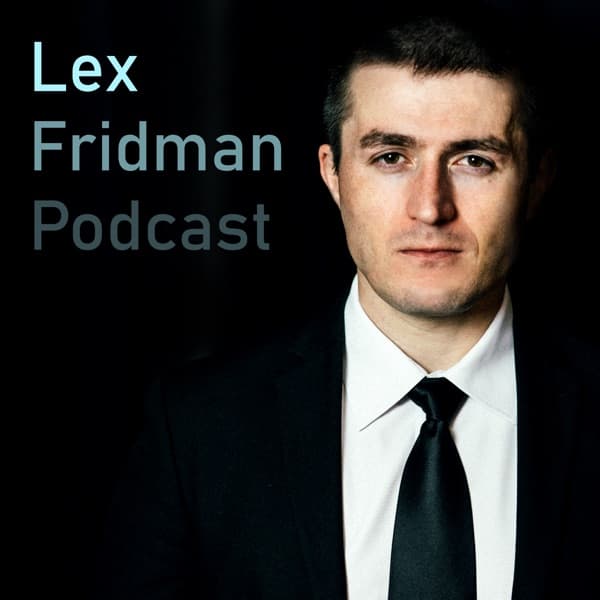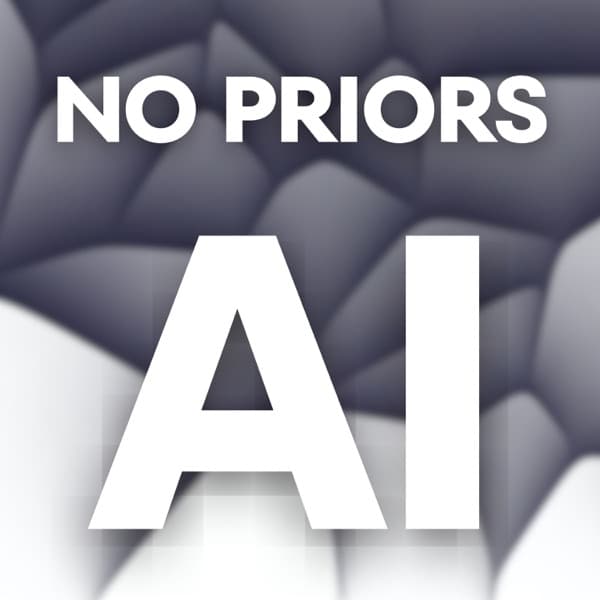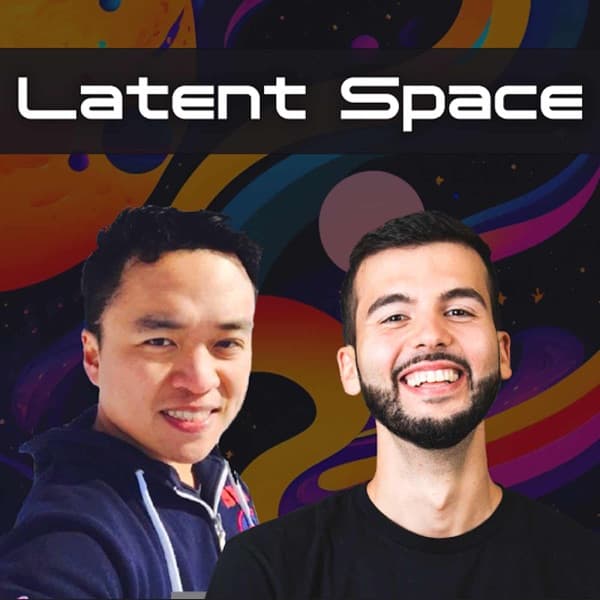Fireship: The video discusses the mysterious disappearance of Dr. Xia Fong Wang, a computer science professor, and explores cases of programmers sabotaging systems.
a16z Podcast: The discussion focuses on modernizing the Department of Defense's procurement processes to integrate innovative technologies and improve efficiency.
Fireship - Respected computer scientist mysteriously disappears...
Dr. Xia Fong Wang, a professor at Indiana University, vanished under mysterious circumstances, with his profile erased and the FBI raiding his home. His recent work focused on machine learning security, raising suspicions about his disappearance. Allegations of misconduct were filed against him, but it's unclear if they relate to the FBI's actions. It's confirmed he's alive in China, but his exact situation remains unknown. The video also highlights cases of programmers sabotaging systems, such as Davis Louu, who created a kill switch in response to potential job loss, and David Tinsley, who implemented a logic bomb for financial gain. These examples illustrate the potential dangers posed by skilled programmers. The video concludes by promoting TryHackMe, a cybersecurity training platform, emphasizing the importance of cybersecurity skills to protect against such threats.
Key Points:
- Dr. Xia Fong Wang disappeared mysteriously; his work involved machine learning security.
- Allegations of misconduct were filed against Wang, but his current status is unclear.
- Programmers like Davis Louu and David Tinsley sabotaged systems, causing financial damage.
- The video emphasizes the potential threat posed by skilled programmers.
- TryHackMe is promoted as a platform to learn cybersecurity skills to counter such threats.
Details:
1. 🔍 Unraveling Dr. Wang's Disappearance
- Dr. Xia Fong Wang was a 10-year professor at Indiana University Bloomington with hundreds of published papers on computer science, cyber security, and privacy. He was renowned for his groundbreaking work in machine learning security, focusing on detecting backdoor large language models, a critical area given the rise of AI in sensitive applications.
- Dr. Wang disappeared under mysterious circumstances recently, prompting a federal investigation. His disappearance is significant due to his expertise in cyber security, a field with potential national security implications. The university erased his profile page, and the FBI raided his home, erasing evidence of his 21-year career, indicating the sensitivity of his research.
- There is no information on his current whereabouts or reasons for being targeted by federal authorities, raising questions about the intersection of academia and national security.
- This case highlights the potential dangers associated with programmers and researchers working on sensitive security topics, emphasizing the need for clear protocols and protections for academics in these fields.
2. 📺 Welcome to The Code Report
- The video delves into the enigmatic case of Dr. Wang, providing a detailed investigation into his mysterious activities.
- It highlights various incidents where programmers have deliberately sabotaged computer systems, examining their motives and methods.
3. 🕵️♂️ Theories About Dr. Wang's Whereabouts
- Dr. Wang, a prominent figure, has been missing, leading to widespread speculation and conspiracy theories about his disappearance.
- One theory suggests government involvement, speculating that Dr. Wang was 'disappeared' in a manner similar to historical political purges, which often involved the state secretly detaining individuals deemed as threats.
- Another theory, albeit more humorous, involves Elon Musk, suggesting that he is personally interrogating Dr. Wang at a GMO facility. This theory appears to be part of broader conspiracy narratives involving high-profile figures.
4. ❓ Allegations and Speculations
- A few weeks ago, misconduct allegations were filed against Wang, accusing him of mislabeling the principal investigator for a grant and failing to disclose co-authors, which suggests potential academic misconduct.
- While Reddit speculations exist regarding Wang's activities, the platform is not always reliable for truthful information, adding to the uncertainty of the situation.
- The FBI raid on Wang's premises suggests serious concerns, possibly linked to these allegations, but the exact reasons remain unclear.
- It appears more likely that Wang voluntarily disappeared possibly due to the allegations, especially after being locked out of his work computer, indicating potential wrongdoing.
- Confirmation from a source in China that Wang is alive contradicts theories of a government disappearance, adding another layer to the complexity.
- The exact whereabouts and activities of Wang remain unknown, highlighting the ongoing uncertainty and speculation surrounding the case.
5. 💣 Notorious Programmer Sabotages
5.1. Case Study: Davis Louu's Sabotage
5.2. Example: David Tinsley's Logic Bomb
6. 🚨 Programmers: A Menace to Society?
- A programmer was sentenced to 6 months in prison and fined $7,500 for malicious code capable of deleting files on an employer's server automatically.
- In 2013, Terry Childs refused to provide passwords for San Francisco's fiber optic network, effectively shutting down the city government for 12 days. He was jailed and later sentenced to four years after eventually providing the passwords.
- The implications of these actions highlight the potential risks posed by programmers who have significant control over critical systems. It underscores the necessity for organizations to implement robust security protocols and oversight mechanisms to prevent misuse of access and authority.
- In another example, a programmer working for a financial institution inserted code that siphoned off small amounts of money from numerous transactions, eventually accumulating a substantial sum before being detected.
- These cases illustrate the dual-edged nature of programming skills, which can be used to both build and disrupt essential services. This necessitates a strategic approach to cybersecurity that includes regular audits, access restrictions, and continuous monitoring.
7. 🔐 Becoming a Cybersecurity Expert with TryHackMe
- TryHackMe is the world's largest cybersecurity training platform, offering real-world hacking challenges to build technical skills.
- Over 4 million developers have utilized TryHackMe's courses, which are also used by major tech companies and government agencies.
- The platform offers a gamified learning experience where users can start at any skill level and earn points as they progress.
- Users can learn to hack into a virtual bank using a browser-controlled virtual machine, emphasizing practical, hands-on experience.
- TryHackMe provides a free start with an option to get 20% off an annual premium subscription.
a16z Podcast - How to Build with the Department of Defense

The conversation highlights the challenges and opportunities in modernizing the Department of Defense (DoD) procurement processes. The DoD is described as a 'black box' due to its complex and outdated procurement systems. The speakers emphasize the need to streamline these processes to better integrate innovative technologies from startups and private sectors. They discuss the historical context of government innovation, noting past successes like the Manhattan Project and the Apollo program, and contrast these with current bureaucratic hurdles. The speakers advocate for a cultural shift within the DoD to embrace risk and speed, similar to Silicon Valley's approach. They highlight the importance of collaboration between the military and private sectors to leverage cutting-edge technologies for national security. Practical steps include simplifying requirements, using consortiums, and creating more flexible funding pathways to encourage innovation. The discussion also touches on the importance of aligning military needs with technological capabilities and the potential for significant improvements in defense operations through better technology integration.
Key Points:
- Streamline DoD procurement to integrate innovative technologies.
- Embrace a cultural shift towards risk and speed in defense acquisition.
- Simplify requirements and use consortiums for better collaboration.
- Create flexible funding pathways to encourage innovation.
- Align military needs with technological capabilities for improved operations.
Details:
1. 🔍 Fixing the DoD's Black Box
- The Department of Defense (DoD) is currently viewed as a 'black box', indicating opacity and the need for reform.
- The goal is to overwhelm the existing system with superior alternatives, illustrating the potential for significant improvement.
- A strategic principle for the U.S. Army is to avoid direct confrontation where possible, emphasizing technological and strategic superiority to minimize American casualties while maximizing enemy losses.
2. 🚀 Historical Speed and Innovation in Government
- The Pentagon was constructed in just 16 months during the early 1940s, showcasing a period when rapid government-led projects were possible.
- The Manhattan Project, a significant scientific endeavor, was completed in three years, illustrating the government's capacity to drive large-scale innovation.
- In response to the Soviet Union's Sputnik launch in 1957, the U.S. developed and launched Explorer 1 in only 84 days, highlighting exceptional speed in governmental response and innovation.
- President Kennedy's 1960s vision of landing a man on the moon was realized by the end of the decade through the Apollo program, signifying the government's ability to achieve monumental technological feats within tight timeframes.
- The historical context underscores the integral role of the federal government in fostering technological advancements and innovation.
3. 🤝 Bridging Silicon Valley and DC
- A significant gap has developed between Silicon Valley and Washington, DC, over recent decades, highlighting a disconnect in collaboration and understanding.
- There is a renewed interest among founders in aligning their projects with national interests, signifying a trend towards fostering cooperation and shared goals.
- Many entrepreneurs struggle to understand and navigate the complexities of government procurement, indicating a need for better guidance and support in this area.
- The challenges faced are primarily cultural and procedural, rather than technological, suggesting that applying technology could address these issues effectively.
- The cultural gap includes differing priorities and operational styles, which can be bridged by fostering mutual understanding and collaboration.
- Procedural challenges, such as navigating government procurement, require specific strategies and tools to simplify the process for entrepreneurs.
- Example: A leading tech firm successfully partnered with a government agency by employing a dedicated liaison to navigate regulatory requirements, highlighting the importance of specialized roles in bridging gaps.
4. 🎙️ A Live Discussion at the American Dynamism Summit
- The establishment of the CTO position within the government took 30 years longer than in the private sector, highlighting a significant delay in technological adaptation and innovation within public institutions.
- There is a pressing need for public sector processes to accelerate and shift from long-term planning to adopt 'software speed' to improve competitiveness and operational efficiency.
- The discussion criticizes the inefficiency in resource allocation, particularly noting that a substantial amount of military equipment is unsuitable for practical use in soldiers' daily operations.
- There is an exploration of whether public sector leaders possess the necessary flexibility and authority to implement changes that could address and rectify systemic inefficiencies.
5. 🔗 Cultural Shifts and Leadership in the DoD
- Bridging the cultural gap between Silicon Valley and Washington, DC is crucial for innovation in the DoD.
- The existing system's effectiveness is questioned, prompting a reevaluation of whether a complete overhaul is necessary or if current strategies are sufficient.
- Leadership dynamics are being reshaped by the new administration's policies, impacting cultural integration within the DoD.
- It is important to note that this content is informational and not intended as legal, business, tax, or investment advice.
- A16Z and its affiliates may have investments in companies mentioned, with full disclosures available on the A16Z website.
6. 💼 Roles of CTOs in the Army and Navy
6.1. CTO Responsibilities and Background
6.2. Navy CTO Responsibilities and Background
7. 🌐 Navigating Government Procurement for Startups
- The Department of Navy acknowledges the transformative power of commercial technology and seeks to leverage digital solutions to enhance governmental processes.
- Technological roles like the CTO were instituted in the government much later than in the private sector, showing a lag in technology adoption.
- Navy and Marine Corps are proactively engaging with non-traditional partners to scale innovations efficiently, indicating openness to startup collaboration.
- Funding challenges exist as funds are often committed for extended periods, requiring strategic divestment to allocate resources for new innovations.
- The Department of Navy employs a private-sector-like strategy by actively scouting for technological innovations, involving a broad range of internal organizations with diverse goals.
8. 🧩 Aligning Military Needs with Industry Innovations
- Startups can pursue paths like SBIR (Small Business Innovation Research) and STTR (Small Business Technology Transfer) to engage with the Department of Defense (DoD). These programs provide funding and support for innovative projects that meet military needs, helping startups transition from R&D to viable products.
- Organizations such as DIU (Defense Innovation Unit) and AFWERX facilitate pathways for startups, offering resources and connections to integrate emerging technologies into defense applications. DIU focuses on accelerating the adoption of commercial technology, while AFWERX emphasizes collaboration and rapid prototyping.
- There is a need to demystify processes for startups working with large military branches like the Army and Navy, as they are often perceived as complex or 'black boxes'. Clearer guidance and support can help startups navigate these challenges effectively.
- Startups typically focus on research and development (R&D) to develop concepts into minimally viable products, emphasizing the development phase. This focus on innovation and quick iteration aligns with the military's need for agile and adaptable solutions.
- Examples of successful collaborations include companies that have transitioned from SBIR Phase I (concept development) to Phase II (prototype creation), leading to Phase III (commercialization) within the DoD applications.
9. 🗝️ Opening the Black Box of DoD Procurement
- Startups are focusing on creating and marketing products, utilizing innovation units like DIU, AFWorks, SoftWorks, and EagleWorks to navigate the Department of Defense's complex procurement system effectively.
- The DoD procurement process is often described as a 'black box' due to its complexity, rooted in frameworks from the 60s to 90s, including significant reforms from the Packard Commission and the Goldwater Nichols Act.
- Efforts are currently underway to address the inefficiencies in the system, which is seen as outdated and reliant on temporary solutions. These efforts aim to streamline processes and reduce bureaucratic obstacles to foster innovation and efficiency.
- Innovation units provide a crucial role in bridging the gap for startups by offering guidance and support to navigate these procurement challenges effectively.
10. 🛡️ Embracing Innovation and Reducing Bureaucracy
- The Army is collaborating with industry to identify and address problems effectively, similar to the acknowledgment process in a 12-step program.
- Industry experts are now involved in writing requirements, ensuring they align with existing solutions, which streamlines processes and reduces misalignment.
- The new software strategy from the Secretary of Defense promotes aggressive use of other transaction authorities, supported by Congressional provisions, to enhance flexibility and efficiency.
- Forming consortiums with industry input allows the Army to leverage external expertise, moving away from a 'know-it-all' approach, and aligning with mission objectives more effectively.
11. 🔄 Revolutionizing Program Offices and Funding
- The number of companies interested in national security has reached an all-time high, indicating a growing awareness of global security challenges and reflecting an unprecedented opportunity for innovation and collaboration in the defense sector.
- Achieving peace through strength is more feasible with increased industry participation, suggesting a strategic advantage in leveraging diverse capabilities and technologies to enhance defense operations.
- Current alignment in defense and security is viewed as a once-in-a-century opportunity to divest and introduce innovative players, emphasizing the need for systemic change and the integration of cutting-edge technologies to maintain a competitive edge in global security.
- The transition to incorporating new companies and technologies is costly, underscoring the importance of strategic investment and careful evaluation of product-market fit to ensure sustainable growth and impactful contributions.
- Superior military technology is essential for credible deterrence of conflict, highlighting the necessity for ongoing innovation and the development of advanced defense systems to maintain strategic superiority and national security.
12. 🔄 Implementing New Procurement Strategies
- Streamlining entry points for procurement to avoid confusion and inefficiency by clearly defining processes.
- Recognizing that selling innovative products to the DoD involves navigating complex processes and existing procurement channels, requiring companies to adapt strategically.
- Successful companies like SpaceX and Palantir have navigated these complexities by aligning with DoD's procurement dynamics, demonstrating the need for strategic adaptation.
- Understanding the role of DoD's Program Executive Offices (PEOs), which are crucial for procurement at scale, consisting of numerous Program Management Offices, is key for entry.
- There are 75 PEOs in the DoD, with 18 in the Department of Navy, highlighting the need for strategic navigation to identify suitable selling opportunities.
- Promoting a shift from traditional procurement focused on static programs of record to a more flexible, capability-per-dollar approach, akin to 'military money ball', encourages innovative procurement.
- Encouraging the use of data-driven decisions in procurement to enhance efficiency and effectiveness, focusing on outcomes and value.
13. 🔄 Streamlining Programs of Record
- The shift of program executive offices across the DoD aims to enhance Horizon One capabilities, indicating a focus on improving current operations with budgeted resources.
- An online index by Steve Blank provides details on program executive offices, facilitating direct communication and resource allocation.
- Due to fixed budgets, transitioning programs requires turning off existing ones to avoid prolonged pilot phases.
- Horizon Two capabilities focus on breakthroughs using existing technology, leveraging increased 'valley of death' funds and small business innovative research.
- The 'AppFit' initiative accelerates procurement for innovative technology, yet there's a shortage of funding and awards for breakthroughs.
- Reducing the 'valley of death' is crucial in Horizon One and Two spaces, while Horizon Three demands innovative marketing strategies to involve DIU and legislative bodies.
- PEOs are not legally mandated, offering flexibility in future restructuring to address systemic inefficiencies.
14. 📈 Emphasizing Outcomes and Speed
- Traditional requirement processes are inefficient and overly complex, leading to delays and suboptimal outcomes.
- Current requirements often include unnecessary details, creating a cumbersome process that hinders progress.
- An example highlighted a requirement where the system needed only a 51% operational reliability, which is unacceptably low for critical applications.
- The focus should shift towards practical and flexible processes that prioritize operational effectiveness rather than bureaucratic compliance.
- The Department of Defense should aim to eliminate outdated practices that do not align with modern operational demands.
- Startups should not be burdened with becoming 'programs of record,' which can lead to prolonged and rigid development cycles.
- The emphasis needs to be on reshaping processes to allow for agility and responsiveness to emerging threats and opportunities.
15. ⏩ Accelerating Technological Integration
- Fast-tracked an 18-month process to three months using a few pages of capability need statements (CNSs) and top-level requirements, showcasing the efficiency of the software acquisition pathway.
- The shift from traditional, lengthy requirements documents to agile processes allows rapid adaptation to technological advancements, especially in software development and AI.
- The Defense Innovation Unit's digital on-ramp facilitates streamlined procurement to enable quick impact-driven decisions across horizontal organizations.
- Edge computing adoption on naval ships demonstrated the potential to divest billion-dollar purchases for more capable infrastructure, leading to deployment in critical areas like the Red Sea.
- An electronic warfare solution was adapted for the Army in three months at a cost of $300k by repurposing existing resources, exemplifying cost-effective scaling.
16. 🔄 Overcoming Bureaucratic Challenges
- Shift focus from traditional metrics of cost, schedule, and performance to prioritize value and time to delivery to enhance operational effectiveness.
- Encourage innovation by creating a 'front door' for companies to engage with the Army, promoting direct engagement with soldiers to assess technology efficacy in crisis situations, leading to more effective solutions.
- Adapt Army structures and equipment to mission requirements, facilitating rapid deployment and testing of new technologies in various geographic locations, which accelerates operational readiness.
- Learn from past experiences such as the global war on terror to implement quick reaction capabilities and address systemic issues rather than temporary fixes, ensuring long-term improvements.
- Transition from side projects to fixing main operational frameworks, emphasizing the need to scale effective solutions for broader impact.
- Emphasize the role of technology adaptation and strategic usage over merely having advanced tech, as highlighted in 'Origins of Victory,' to achieve sustainable success.
17. 🔄 Enhancing Military Capabilities and Adaptation
- Adopting outcome-driven metrics ensures new technologies effectively transform operations, focusing on substantial improvements over current systems to achieve 'overmatch,' rather than just incremental changes.
- The Naval Identity Service has replaced 1,000 different identity management solutions, allowing resource allocation to more critical problems, demonstrating a strategic shift in system management and resource optimization.
- Utilizing A-B testing and cloud-based simulations to clearly demonstrate the advantages of new solutions over existing ones, streamlining decision-making processes and illustrating practical benefits of technology integration.
- Consolidation from 17 separate mission command programs to unified systems showcases a strategic move towards shared services and systems, demonstrating efficiency and improved operational capabilities.
- Acknowledging that the Department of Defense should integrate existing enterprise solutions rather than developing proprietary maps or data platforms, signifying a strategic focus on leveraging existing technologies for efficiency.
- Efforts to streamline and eliminate outdated systems focus on leveraging modern technology and reducing complexity, illustrating a strategic approach to system modernization and operational enhancement.
18. 🔄 Leveraging Shared Services for Efficiency
- Organizations are encouraged to validate and adopt new solutions that promise 100x improvements rather than incremental changes.
- Companies should focus on their core strengths, like data services or UI, to avoid inefficiencies from handling non-core tasks.
- The shift towards using the best-performing components highlights the need for software-defined operations and economies of scale.
- Senior leaders support using common sense and strategic decision-making to prevent costly inefficiencies.
- Governance and compute strategies should leverage shared services to avoid redundant systems and capitalize on economies of scale.
19. 🛠️ Collaboration Between Industry and Military
- The military aims to reduce silos among 75 program offices to create horizontal capabilities relevant across services, enhancing economies of scale and partnering with startups more efficiently.
- A strategy is in place to outsource common services to enterprises, echoing the 'services of common concern' model in the intelligence community, to prevent duplication across agencies.
- Organizations like CDAO and DIU are tasked with delivering universally applicable capabilities, promoting data sharing across military branches.
- Unique capabilities specific to particular branches still receive internal focus.
- Startups and small companies are pivotal in innovation, with examples like Palantir's evolution from an In-Q-Tel investment to a significant military operations player.
- The military seeks solutions beyond technological challenges, focusing on cultural and process barriers to effectively apply available technology.
- Large Language Model (LLM) providers emphasize unique datasets and use cases, aligning with the military's need for mission-specific solutions.
- Startups aid in identifying problems, recognizing they can't solve all internal issues but play a vital role in problem identification.
20. 🔄 Rethinking Risk and Innovation in the DoD
- Startup CEOs should immerse themselves in the environment of their target group for nine months before hiring sales personnel, highlighting the importance of understanding the warfighter's perspective.
- The DoD is encouraged to establish more shared services at the department level to rapidly scale successful innovations, suggesting a shift towards integrating autonomy from the outset.
- The DoD is leveraging solutions across branches like the Air Force, Army, and Navy to solve enterprise-wide problems, advocating for an architectural shift towards shared, AI-driven models to address unique challenges such as command and control.
- The acquisition community's focus on risk reduction is balanced by the need for mavericks who can drive technological breakthroughs, with the challenge of identifying and nurturing such individuals in a large organization.
- The historical budgeting shift in 1968 from general funding to specific allocations (e.g., Minuteman III) highlights the evolving complexity and the need for more flexible and responsive budgeting processes.
- With the Army accounting for only 21% of the defense budget, it faces constraints from numerous directed budget line items, underscoring the necessity for spending flexibility to accommodate technological advancements.
- The DoD's budgeting process requires forecasting 3-5 years in advance, with limited ability to adjust during execution, which hinders the transition of technology from laboratory to field applications.
21. 🔄 Restructuring Defense Spending and Acquisition
- The current defense acquisition strategy, which aims to predict and plan 3 to 5 years ahead, is ineffective. A shift towards more adaptive, real-time solutions is necessary.
- Zero touch AI is recognized as more efficient than current methods of managing unified endpoints, suggesting a shift towards AI-driven solutions could reduce costs and enhance operational effectiveness.
- The importance of having compelling data and evidence to justify investments in new, superior technologies is emphasized, aiming to ensure the total cost of ownership aligns with mission-critical needs.
- A focus on divestment from ineffective processes through strategic investments is highlighted as a major change, aiming for 90% of the defense portfolio to consist of high-impact investments.
- The current innovation activities represent less than 1% of the budget, signaling a need to scale successful initiatives for greater national security impact.
- Collaboration between venture capital approaches and defense strategies is seen as key to increasing risk appetite and fostering innovation.
- In-Q-Tel's model, leveraging a 25:1 private to federal dollar ratio, exemplifies successful public-private partnerships in defense innovation.
- A cultural shift in risk assessment is necessary, prioritizing speed and adaptive responses over prolonged risk minimization, to harness emerging technologies effectively.
22. 🔄 Fostering Innovation and Scaling Solutions
- Traditional risk assessment methods are outdated and should be compared to focusing on winning outcomes rather than merely avoiding mistakes.
- "Cost as an Independent Variable" (CAVE) should be complemented by "Speed as an Independent Variable" (SAVE), underscoring the importance of rapid outcome achievement over strict budget constraints.
- Current innovations seek not only 20% better capabilities but also cross-domain solutions that integrate across program offices, exemplified by the Army's cross-domain service initiative.
- Cross-domain as a service functions like an API for binary XML between networks, representing a solved problem in national security that should not be repeatedly addressed.
- The Marine Innovation Unit leverages reservists with venture experience to scout technologies globally, engaging with startup founders for scalable innovations.
- Contracting officers should prioritize innovation and success over reducing contract numbers, with some initiatives proving to be up to 25 times more effective.
- Highlighting successful innovation stories can create a 'flywheel effect,' fostering more frequent successes and driving systemic improvements.
23. 🔄 Future Prospects and Technological Advancements
- Cape, a mobile virtual network operator startup in Guam, successfully transitioned from pilot to actual use, highlighting the importance of readiness for scaling opportunities.
- Hands-on testing with advanced technology can significantly shorten the scaling timeline, contrasting with traditional government timelines.
- There is optimism about scaling current successful software acquisition pathways, having gained significant permission to proceed.
- Excitement surrounds the potential to rapidly field technology solutions to warfighters within the next 6 to 12 months, bypassing traditional government contracts.
- The Army's Next Generation Command and Control is moving into its program phase, facilitated by a consortium of companies.
- An example of technological advancement is the transition from old tablet systems in M1A2 SEP B3 tanks to modern Android-based command and control systems, enabling enhanced functionality for tank commanders.
- Project Flytrap in Europe is focused on countering unmanned systems by incorporating non-conventional sensors and automation, influenced by lessons from Ukraine.
- Automation and decision mechanisms are being developed to address drone threats, aiming for seamless integration with warfighters' operations.
- A consortium for autonomy is being established to explore autonomous military formations, aiming to ensure that the U.S. Army minimizes human casualties by leveraging technology.
- Efforts are being made to develop a comprehensive tool chain for autonomy, moving away from outdated microcontroller-based systems.
- The strategy includes overcoming policy blockers, emphasizing a proactive approach to implementing technological advancements.
24. 🔄 Enhancing Military Readiness and Autonomy
24.1. Key Insights on Military-Startup Collaborations
24.2. Cultural and Personal Preferences
25. 🎬 Outro and Final Thoughts
- The team invests significant effort in planning each episode, including guest selections and scheduling, to ensure high-quality content and tackle specific challenges like coordinating schedules and aligning themes with current audience interests.
- Listeners are encouraged to provide feedback on their favorite episodes via ratethispodcast.com/A16Z, which not only enhances audience engagement but also guides future content decisions.
- The role of the editor is crucial in the production cycle, highlighting the collaborative effort required to produce polished episodes and maintain a consistent quality standard.
Included Channels
 Lex Fridman Podcast
Lex Fridman Podcast All-In with Chamath, Jason, Sacks & Friedberg
All-In with Chamath, Jason, Sacks & Friedberg Modern Wisdom
Modern Wisdom Greymatter
Greymatter In Depth
In Depth a16z Podcast
a16z Podcast Lenny's Podcast: Product | Growth | Career
Lenny's Podcast: Product | Growth | Career Lightcone Podcast
Lightcone Podcast No Priors AI
No Priors AI The Twenty Minute VC (20VC): Venture Capital | Startup Funding | The Pitch
The Twenty Minute VC (20VC): Venture Capital | Startup Funding | The Pitch How I Built This with Guy Raz
How I Built This with Guy Raz BG2Pod with Brad Gerstner and Bill Gurley
BG2Pod with Brad Gerstner and Bill Gurley Latent Space: The AI Engineer Podcast
Latent Space: The AI Engineer Podcast






